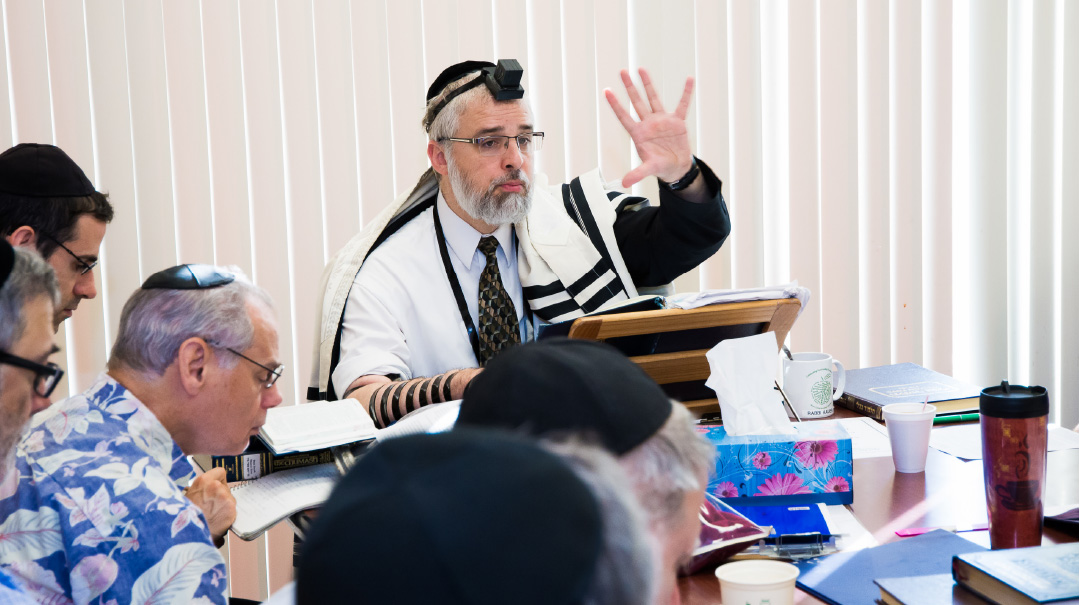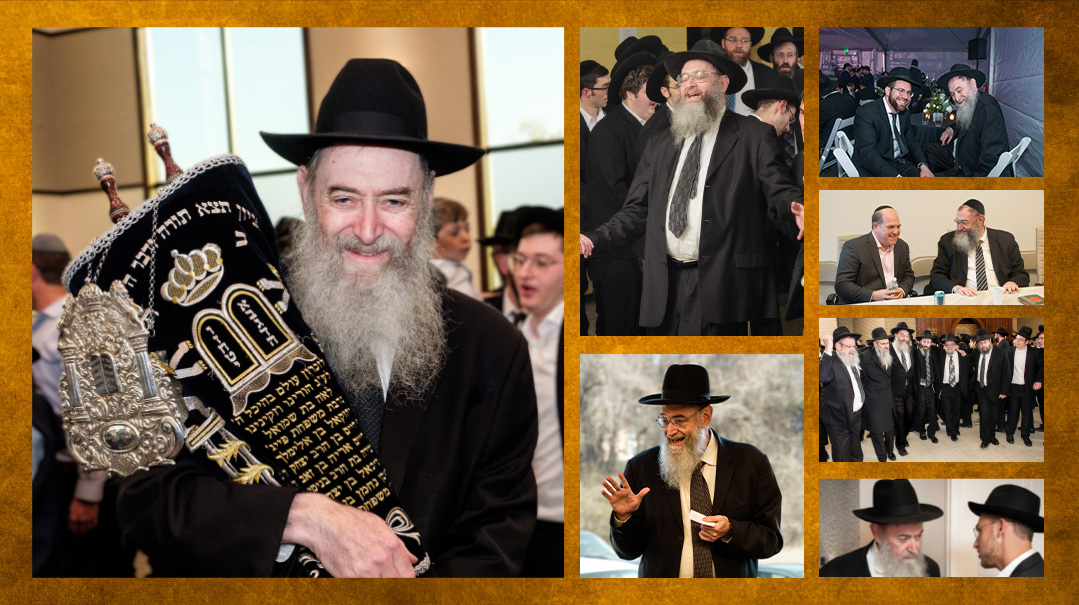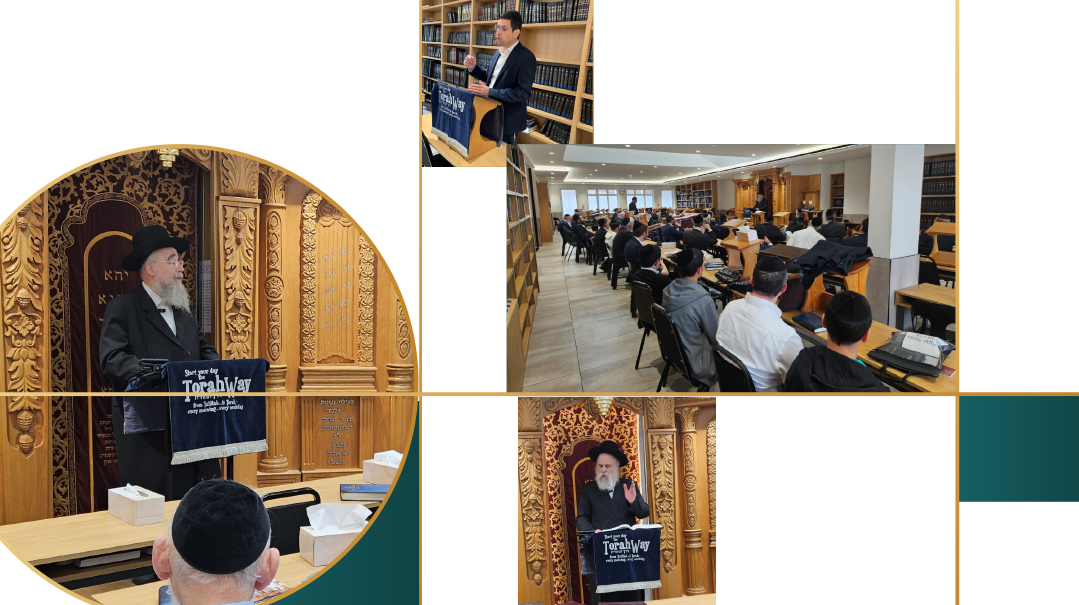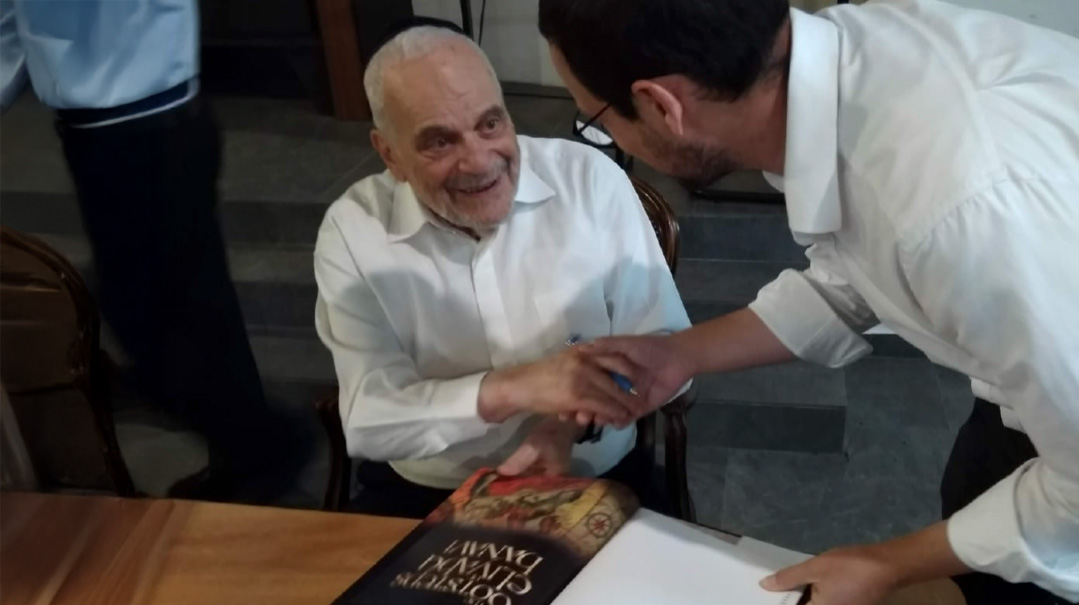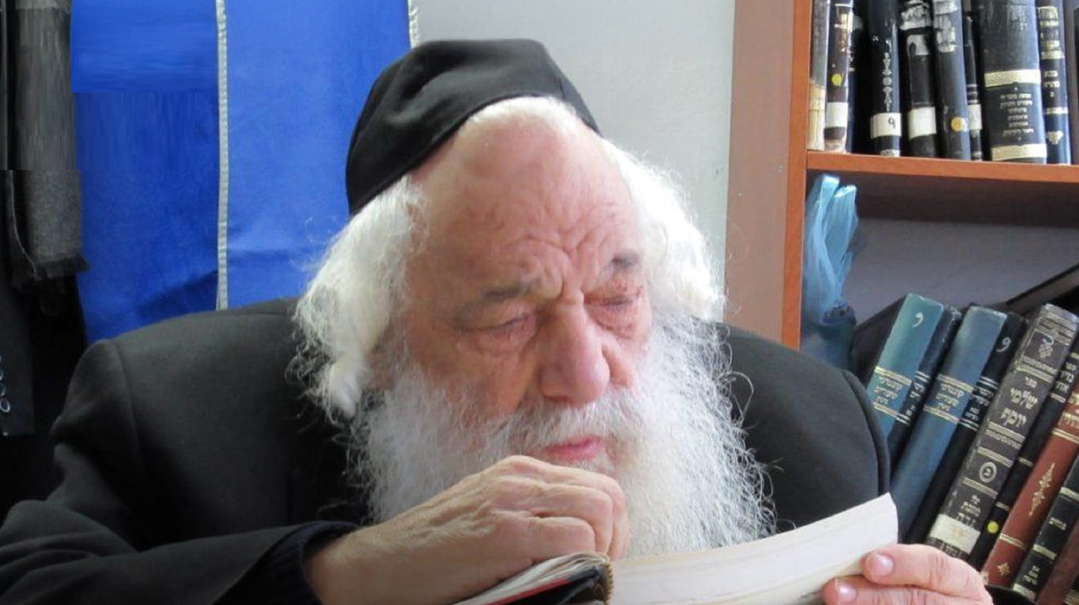Every Day a Good Morning

A principal of principals, Morah Blau demanded academic excellence while ensuring school was enjoyable and exciting. Her petirah on Erev Pesach left generations of students grieving

Mrs. Cohen,* a sixth-grade teacher with several years’ experience under her belt, was exasperated. She simply couldn’t get through to Chevy. The girl was defiant, indifferent to her schoolwork, and seemed to delight in picking fights with her friends.
In frustration, the teacher consulted with the principal, Morah Rochel Blau. Before Mrs. Cohen could start to lay out her litany of grievances, Morah Blau took her by the arm and pulled her into the office, wordlessly pointing to a framed picture on her desk. It was Chevy, beaming proudly at her kindergarten siddur party, with her principal’s arm around her shoulder.
“I loved her then, I will love her now, and she’s going to grow out of this,” promised Morah Blau.
This was vintage Morah Blau: an abiding love for her students, coupled with complete confidence in their ability to access their limitless potential.
Rising Light
As the sun went down over Europe, across the ocean a new sun rose.
It was March 1935, just three weeks after the passing of Sarah Schenirer, legendary pioneer of girls’ chinuch, and the world was poised on the cusp of World War II. During that tumultuous time, Rochel (Felice) Lieberman was born in Brooklyn to two scions of proud Hungarian rabbinic families. (“My family is Hungarian going back to Avraham Avinu,” she used to say.)
Her father, a respected talmid chacham, eked out a meager living selling eggs, but his true passion was the shiurim he delivered in Torah Vodaath. Rabbi Lieberman held rabbanim in the highest respect; when he heard the boat carrying the Mirrer talmidim from Shanghai had docked in New York, he ran to greet it, later managing to claim one of its most esteemed passengers, Rav Dovid Kviat, as a son-in-law.
Though the family was spiritually wealthy, they were materially impoverished. The five girls officially attended Rabbi and Rebbetzin Kaplan’s Bais Yaakov, but Felice’s older sister had to leave school to support the family; another was never able to attend at all. When Rabbi Kaplan would knock, seeking his tuition payments, Rabbi Lieberman would tell him, “I can give you the girls, but the money…”
Felice’s school career got off to a rocky start. Because of certain health department restrictions, she missed the last year and a half of elementary school. Underprepared though she was for high school, her talents were recognized by Dr. Gershon Kranzler, then Bais Yaakov’s English principal.
“Without him, I’d be nobody,” Morah Blau used to say. Recognizing the girl’s aptitude for the arts, particularly writing, as well as her magnetic personality and rock-solid hashkafos, Dr. Kranzler made it his mission to draw Felice out, assigning her jobs and tapping her to give art lessons to groups of students he thought could benefit from them.
If Dr. Kranzler was the one who discovered Felice’s talents, it was Rebbetzin Vichna Kaplan, a protégée of Sarah Schenirer, who gave the raw talent direction.
“Over 68 years in chinuch, my mother never held an assembly without mentioning Rebbetzin Kaplan,” recalls her older daughter, Mrs. Tzivia Fishman. “Rebbetzin Kaplan lit the fire in her, transmitting the ideal that teaching is the most noble thing to do. She was an ishah gedolah on a tremendous madreigah, and my mother emulated that.”
Strong Beginnings
Ignited with her mentor’s passion, 17-year-old Felice finished seminary, and embarked on what would be a decades-long trailblazing career in chinuch habanos. She began teaching in the Bronx and would take the subway to work, teach a full day at multiple grade levels, return home by subway, and continue taking seminary classes at night. She didn’t rest on Shabbos, either, instead leading Bnos groups.
In addition to classroom teaching, Felice Lieberman was a pioneer in frum camping, with stints as head counselor in Camps Naarah, Emunah, and Chedva, breaking ground with now-classic institutions such as night activity and color war breakouts (some memorable ones involved her cutting off her bottle curls in front of the entire camp to make the point that “color war is hair!” and descending from a helicopter into camp).
In these informal settings, she had every bit as much impact as during frontal teaching. It was in Camp Emunah that she drew close a young girl named Gladys Zwiebel, the future Rebbetzin Zahava Braunstein, and convinced her to attend Bais Yaakov Seminary.
After several years teaching in the Bronx and on the Lower East Side, Miss Lieberman married Rav Chaim Elazar Blau. A child survivor of the Holocaust, the chassan was a talmid of Rav Abba Berman, who thought his wife’s friend would make a wonderful shidduch for his beloved talmid, and redt the shidduch.
After their first child was born, the young couple traveled to Bnei Brak to learn in Rav Berman’s fledgling kollel there, an undertaking unheard of at the time. The city didn’t use electricity on Shabbos, so the young kallah spent long Friday nights in complete darkness. In an era when transatlantic travel was sporadic and phone calls were prohibitively expensive, she said goodbye to her family in order to further her husband’s learning in the best possible environment.
Before their second son was born (they’d go on to have two more children, both girls), the Blaus returned to the States, and Morah Blau picked up where she’d left off.
For over 20 years, she taught Chumash in the high school that would eventually become BYA. In 1982, when the school moved from Boro Park’s 18th Avenue to its current home on Elm Avenue in Flatbush, Morah Blau was asked to head the new elementary school, and maintained that position until her petirah on Erev Pesach.
Morah Blau’s dedication to her calling was total. About seven years ago, relates her youngest daughter, Mrs. Leah Jacobs of Lakewood, when her mother was in her late seventies, a bout of cellulitis landed her in the hospital through the first week of school.
“I’m 78 and most of my friends are retired, sipping coffee at their front windows,” she told her boss, “and I’m calling in sick for the first time in my life.”
Loving and Lifting
Perhaps the most remarkable thing about Morah Blau was the depth of her connection with every student. Anyone who crossed the threshold of BYA remembers her trademark “Boker tov, yelados!” She also invested time and energy to form a unique, individualized connection with every student.
Upon learning from a student’s composition that they shared an ancestor (the author of Kuntres Hasefeikos, six generations back) she excitedly went to the girl’s classroom to announce their newly discovered relationship, and made sure to call in her “sister” to learn Pirkei Avos on the yahrtzeit of their shared ancestor.
Every girl was greeted by name, remembers Mrs. Yormark, a teacher in the BYA high school whose daughters all studied at the BYA elementary. It wasn’t just “the Yormarks”; she knew each one’s grade, personality, and specific needs.
Even when it came to family simchahs, Morah Blau was loathe to give up her morning greetings. She once told one of her children that it was difficult for her when she had to come late to school for a family bris, because if she missed greeting the students at her usual time, she’d have to visit each class to wish everyone good morning.
“We knew she had two families,” recalls oldest son, Rabbi Shmuel Blau, today a rebbi in a Lakewood cheder. “Her family on 50th street — us — and her family on Elm Street.”
Did her children resent sharing her with the students? On the contrary, explains Rabbi Blau. They understood the centrality of the school to their mother’s mission.
“My children are my present from Hashem,” he remembers his mother saying, “and my talmidos are what I’m giving back to Hashem.”
The students felt like family, too; Mrs. Yormark’s kindergarten granddaughter would come home talking about “the bubby in the lobby.”
Tough Love
She was tough and had high standards. “She demanded a lot of others, but even more of herself. And she’d also laugh with you, say a kind word,” says Mrs. Reisman, who was Morah Blau’s student for several years, then a parent of a student. “There was a mischievous twinkle in her eye. She was so efficient and did so much in a day, but she always had time to schmooze. She was funny, she was fair, she was firm.”
Each student probably got upward of 100 hugs during her years in school, a secretary estimates. Every composition and test paper was reviewed by Morah Blau, and each got a personalized comment in her beautiful flowing penmanship. Not just a scribble, but a heartfelt note. Multiplied by the 700 students in the school at any given time, it took many hours for Morah Blau to comment on every paper.
When young Leah Blau was a student in a different elementary school, nearer to their home, she once received a test on which the teacher had scrawled “Fantastic!” Morah Blau called the young principal to give her a tip: Students need to be treated with derech eretz and kavod. A scribbled comment does not show the students the esteem you hold them in.
Morah Blau was a copious letter writer, and her warm comments touched people deeply. During shivah, a woman called to say that at 75 years old, she still kept her second-grade report card from Miss Lieberman in her night table.
Although Morah Blau’s academic standards were rigorous, she held girls to them with love and encouragement, never with criticism. If a girl fared poorly on one of the formidable BYA parshah finals, remembers a student, Morah Blau would take her aside and look over her paper, trying to find additional points to award — even after having made the rounds of the classrooms during the test, offering hints wherever needed to ensure her students’ success.
“We got the message that parshah was crucial to our lives,” she remembers, “but she tried to help each girl succeed according to her ability.”
Girls who couldn’t meet Morah Blau’s high academic standards were still loved unconditionally. Once, recalls Mrs. Jacobs, her mother skipped a struggling student from sixth to eighth grade.
“It doesn’t matter,” said Morah Blau candidly. “She can’t spell, but she’ll do well in life. Let’s just get her out of the system faster.”
“She understood kids, and delighted in them,” says Mrs. Reisman. The principal would dole out hot cocoa and popcorn, ask girls for help organizing the costume room, or simply schmooze with them.
It wasn’t only the academically weaker girls who had a friend in Morah Blau. She once had to take a girl to task for wearing a too-short uniform skirt, and asked her to come to the office to change into a backup skirt kept there. However, the girl was embarrassed to wear the school’s too-large and too-long skirt. So the principal sat with the student for an hour, pinning, hemming, and sewing, until she felt good leaving the office in her newly altered skirt.
When the monthly Olomeinu magazine would come out, Morah Blau would check the pen pal column. If any BYA girls had written in seeking pen pals, they were sure to have one: Morah Blau.
She loved Torah, she loved the girls, and nothing made her happier than sharing the one with the other.
A Principal’s Principal
Morah Blau was a principal’s principal, says her son. “There are many qualities a principal should have,” he says, “and most principals excel in one or two. But she was an icon in every quality: warmth, high standards, personal chashivus — really everything.”
Morah Blau had demanding academic standards, coupled with a firm belief that school should be fun and exciting. Projects, games, and songs were all part of her educational toolbox. Plays and productions were taken very seriously (on her desk, at the time of her petirah, were two drafts of Hebrew-language plays, one about Devorah Haneviah and the other about Raoul Wallenberg).
Mrs. Jacobs remembers her mother returning home from school one day with a sack of costumes and an aggrieved expression. The teacher, apparently, had neglected to iron the costumes Morah Blau had spent all summer sewing. How could girls put on a play in rumpled costumes?
Her unflagging energy and drive for excellence meant she didn’t just demand hard work from others, but invested inordinate amounts herself. Morah Blau would regularly compose Hebrew parshah songs for all grade levels. Students would absorb parshah and Lashon Hakodesh without ever realizing they were learning.
Her standards were high, but fair. She didn’t believe in tricky tests, and insisted that teachers hand back answer sheets along with their tests. Although some teachers grumbled, preferring to be able to reuse their materials from year to year, she insisted. How else would the students know the correct material?
In her nearly seven decades of chinuch, Morah Blau trained several generations of teachers.
“Teachers used to quake from her, but they loved her,” recalls Mrs. Reisman.
She trained teachers so well that a teacher leaving her employment could be certain of finding a job immediately; everyone knew that Morah Blau’s teachers were the best prepared. Many principals and leading mechanchos of today’s schools are products of Morah Blau’s tutelage.
Being Her Best
“Colorful.” “Vibrant.” “Funny.” These are just some of the adjectives Morah Blau’s admirers use in an attempt to describe someone too large and unique to fit into any of the usual boxes.
Morah Blau loved words. “When I was bored,” recalls Mrs. Jacobs, “I used to pester her by opening a dictionary and choosing a word, but there was never a word she didn’t know or couldn’t spell.”
In addition to her general love for beautiful words and an elegant turn of phrase, Morah Blau specifically loved words of Torah and tefillah, and took personal offense when ignorant speakers butchered them. Her knowledge of dikduk and emphasis on correct pronunciation were the stuff of legend.
“The words are so pretty!” she’d exclaim. “Why not give Hashem pretty words?”
One of today’s high school principals got her start in one of Morah Blau’s sixth grade classrooms. After observing her one day, Morah Blau drew her aside and said gently, “If you’re going to be teaching the sefer this year, you’ll be using its name a lot of times. You may as well say Shmu-el instead of Shmu-el.”
An old friend used to jokingly call her “Police,” instead of Felice, since she knew her punctilious friend would never ignore the grammar rule that applies a dagesh to the letters “beged kefes b’rosh milah.”
After discovering a gift for music in her teens, she went on to compose many enduring songs, among them the well-known “A Little Bird Is Calling.” One of her most famous songs, a ballad about Sarah Schenirer called, “In a Little Town in Poland,” was composed when she was only 15, for use in a Bnos group Shabbos play, and has gone on to become an anthem of the Bais Yaakov movement.
Whatever Morah Blau did, she did well. She believed that anything worth doing was worth excelling at. If she was making a pot of farfel, says Mrs. Jacobs, it was going to be the best pot of farfel she ever made. Not because the food was important to her, explains Mrs. Jacobs, but because excellence was. “She didn’t like the attitude of ‘what does it matter?’ ”
Morah Blau didn’t idealize austerity. Spending only minimally on herself, her industriousness and talent enabled her to serve and keep home royally. Still, without jewelry or expensive clothing, she always dressed up and looked beautiful, modeling the dignified, regal appearance befitting a Jewish woman.
Devarim Hayotzim min Halev
Earlier this year, when Morah Blau took ill with what turned out to be her final illness, Mrs. Yormark shared the troubling news with her daughters.
“The explosion of emotion was incredible,” she recalls. “They each said: They don’t make principals like Morah Blau. She was the real thing, very emesdig, a cut above.”
Everyone, says Mrs. Yormark, sensed Morah Blau’s genuineness, love, and nobility.
“My mother built a bridge,” reflects Rabbi Blau, “spanning Sarah Schenirer’s classroom in Poland to 2020. She passed that torch, with love, to a diverse crowd.”
A tiny woman. A passion for Torah. A resounding “Boker tov,” that will echo for generations.
Her Pipeline
Morah Blau never preached something she didn’t live by. Her own davening exemplified the absolute emunah through which she lived. Her davening was exquisite, as she savored and carefully enunciated every word.
She never missed Minchah, and her siddur and Tehillim contained long lists of names and their specific needs. One night, exhausted from a long day, she struggled to get up and finish her daily Tehillim. Her husband tried to persuade her to leave it for the next day, but Morah Blau simply couldn’t: “These people are depending on me,” she explained.
She encouraged her teachers to say, “l’adam maarchei lev, u’mei’Hashem maaneh lashon” before entering the classroom, asking for Divine guidance in giving over the lesson. Once, she lamented the fact that a teacher failed to follow her suggestion. The secretary wondered aloud how Morah Blau could know whether the teacher had said it, but to Morah Blau, it was obvious: The lesson hadn’t been a success.
(Originally featured in Family First, Issue 692)
Oops! We could not locate your form.






